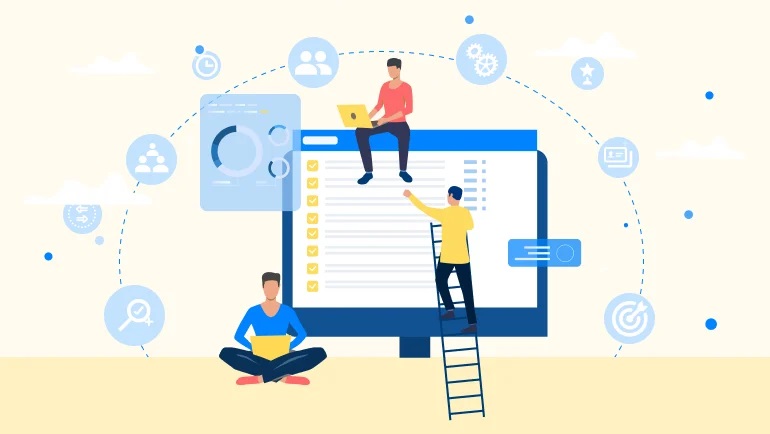In today’s competitive business environment, organisations are increasingly turning to technology to improve efficiency, automate manual work, and create better employee experiences. One of the most powerful tools for this transformation is an HRMS — Human Resource Management System. But buying an HRMS is just the first step. Implementing it correctly is what ensures real results.
A smooth HRMS implementation can automate processes, reduce errors, ensure compliance, and support better decision-making. On the other hand, a poorly executed implementation can lead to confusion, resistance from employees, and wasted investment. This step-by-step guide will help Indian businesses implement an HRMS successfully and get maximum value from it.
Step 1: Define Your Goals and Requirements
Before you begin, you must clearly understand why you need a HRMS and what you want it to achieve. This reduces confusion later and helps you choose the right features.
Some common goals include:
- Automating payroll and attendance
- Reducing manual paperwork
- Improving leave management
- Enhancing employee self-service
- Boosting HR productivity
- Ensuring compliance with Indian labour laws
List all your HR challenges and expectations. This will act as your roadmap throughout the implementation process.
Step 2: Build an Internal Project Team
HRMS implementation requires coordination across different departments. Form a small internal team that includes:
- HR managers
- IT representatives
- Payroll specialists
- Department heads
- A project leader
This team will communicate with the HRMS vendor, handle training, monitor progress, and ensure the implementation stays on track.
Step 3: Choose the Right HRMS Vendor
The success of implementation depends heavily on the vendor you choose. During evaluation, check:
- Feature list
- Ease of use
- Mobile app quality
- Integration options
- Scalability
- Data security
- Customer support
Ask for a demo and trial version. Choose a vendor who provides strong support during and after implementation.
Step 4: Plan the Implementation Timeline
After selecting the HRMS, work with the vendor to create an implementation plan. This includes:
- Milestones
- Module-by-module rollout
- Training schedules
- Data transfer timelines
- Testing phases
A clear timeline ensures smooth execution and helps avoid delays.
Step 5: Prepare and Clean Your HR Data
Data migration is one of the most important and time-consuming parts of HRMS implementation. Start by collecting and cleaning existing HR data such as:
- Employee details
- Attendance records
- Salary components
- Leave balances
- Tax details
- PF & ESI data
Remove duplicates or outdated information. Clean, accurate data ensures the HRMS runs smoothly from day one.
Step 6: Configure and Customise the HRMS
Every business has unique HR processes. Good HRMS platforms allow customisation of:
- Attendance policies
- Leave rules
- Payroll structures
- Approval workflows
- Department hierarchies
- Shift timings
Work closely with the vendor to customise the HRMS according to your company’s policies. This ensures the system matches your real-world operations.
Step 7: Integrate with Existing Systems
To make HRMS more powerful, integrate it with systems you already use, such as:
- Biometric attendance devices
- Accounting software
- ERP systems
- Employee communication tools
Smooth integration reduces manual work and ensures real-time data flow.
Step 8: Train HR Teams and Employees
Even the best HRMS will fail if employees don’t know how to use it. Organise training sessions for:
- HR staff
- Managers
- Employees
Training should include:
- How to mark attendance
- Applying for leave
- Downloading payslips
- Updating personal information
- Using the mobile app
Provide simple cheat sheets or video tutorials to support learning.
Step 9: Test the System Thoroughly
Before launching the HRMS company-wide, run pilot testing. This helps identify and fix issues early. During testing, check:
- Payroll calculations
- Attendance accuracy
- Leave approvals
- Role-based access
- Data security features
- Performance load
Testing ensures your HRMS works perfectly in real business scenarios.
Step 10: Roll Out the HRMS in Phases
Instead of launching all features at once, roll out the HRMS in phases. For example:
- Attendance and leave
- Payroll
- Performance management
- Recruitment and onboarding
This makes adoption easier and helps employees adjust gradually.
Step 11: Monitor, Review, and Improve
After the HRMS goes live, monitor its performance regularly:
- Are employees using all features?
- Are HR tasks faster now?
- Are there any errors or delays?
- Do managers need more training?
Take feedback from employees, fix issues, and ask your vendor for updates or new features when required.
Conclusion
HRMS implementation may seem like a big project, but with careful planning and the right approach, it can transform your organisation’s HR operations. By defining your goals, selecting the right vendor, preparing clean data, training your teams, and monitoring performance, your business can enjoy the full benefits of automation and efficiency.
A well-implemented HRMS does more than manage HR tasks—it supports growth, strengthens compliance, and creates a better experience for every employee. With the right steps, your organisation can build a future-ready HR system that drives long-term success.




